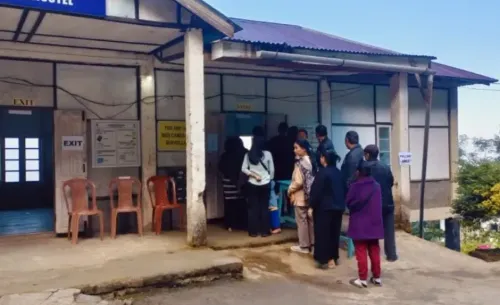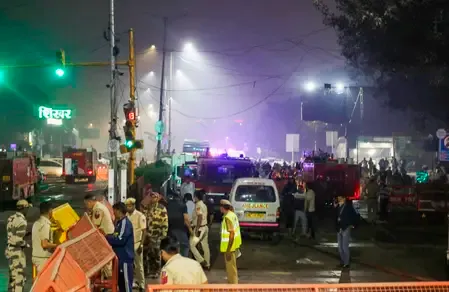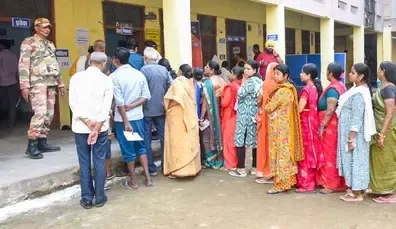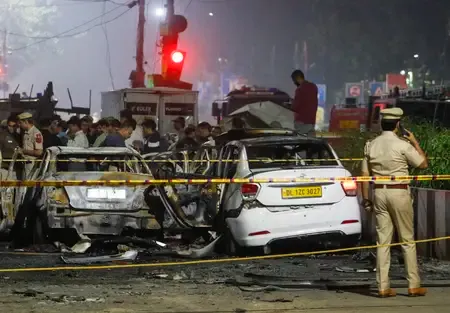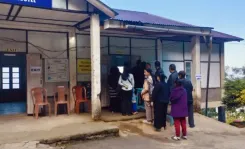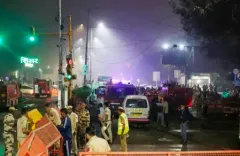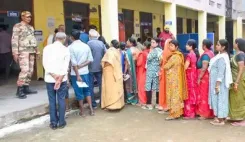What Dominated the Campaigning in Bihar Elections?

Synopsis
Key Takeaways
- Intense Campaigning: The election saw a significant increase in campaign activities from all political parties.
- Welfare Promises: There was an unprecedented rise in welfare pledges among candidates.
- Political Shifts: New political entrants are reshaping the traditional political dynamics in Bihar.
- Voter Engagement: Record voter turnout signals a strong desire for change among the electorate.
- Controversies: Various incidents, including violence, have added tension to the electoral atmosphere.
Patna, Nov 10 (NationPress) The campaigning phase for the 2025 Bihar Assembly elections concluded on Monday, with voting set to occur on Tuesday across 122 constituencies in 20 districts.
This election is heralded as a significant event due to multiple political transformations happening concurrently.
The absence of Lalu Prasad Yadav, the formal entry of Prashant Kishor, an increase in welfare pledges, strongman arrests, and the rekindling of the Jungle Raj versus good governance discourse were the key themes throughout the 35-day campaign.
Prime Minister Narendra Modi took a leading role in campaigning, delivering 16 rallies from October 24 to November 8.
He consistently referenced Jungle Raj, defining it as synonymous with Katta, cruelty, bitterness, ill manners, and corruption.
His focus leaned more towards the Lalu-Rabri period rather than Nitish Kumar’s administration.
New terminologies such as Katta (country-made gun), Kanpati (Temple), Donali Bandook (Double-barrelled gun), Charra (pellets), Nachania (dancer), and Baap (father) were introduced into the campaign lexicon for the first time.
In contrast, Congress MP Rahul Gandhi adopted a different strategy, aiming to connect with the Mallah (fisherfolk) community.
In Begusarai, he entered a pond with Mukesh Sahani, chief of the Vikassheel Insaan Party, casting a fishing net – a visual that went viral.
During his speeches, he countered the BJP’s Jungle Raj narrative, claiming those who discuss Jungle Raj in Bihar are perpetuating it in Delhi. He also accused the BJP and the Election Commission of vote theft.
This effort to connect with the grassroots was viewed within Congress as a novel initiative.
For Prashant Kishor, this election marked his formal entry into politics.
His Jan Suraaj, established on October 2, 2024, contested 240 seats.
The scale of his public gatherings indicated that voters were seeking an alternative, transforming this election into a three-way contest instead of the traditional NDA versus Mahagathbandhan showdown.
Kishor targeted both political blocs, regularly showcasing documents that alleged corruption among leaders from various parties.
The murder of Dularchand Yadav, a supporter of Jan Suraaj, on October 30 in Mokama sparked a significant political incident.
It was reported that a confrontation with the team of JDU candidate Anant Singh escalated into gunfire.
Dularchand was initially shot in the leg and subsequently allegedly run over by a vehicle.
Anant Singh was later arrested and is currently in Beur Jail, Patna.
This incident shifted the narrative, reigniting discussions on gun violence in the state.
Within the Mahagathbandhan, disagreements arose over the Chief Ministerial candidacy, leading to a clash between Tejashwi Yadav and Mukesh Sahani until Congress leadership intervened.
On October 23, Tejashwi was designated as the CM candidate while Sahani was named deputy CM candidate.
Disputes over seat allocations led to rebellions in approximately a dozen constituencies.
The NDA has not officially declared a CM candidate, but the BJP has repeatedly emphasized that Nitish Kumar will lead, with no vacancies for the position.
In addition to attacks on the Lalu family, corruption claims against NDA officials gained prominence.
Kishor disseminated documents and daily social media posts targeting BJP state president Dilip Jaiswal (over a medical college), JDU leader Ashok Choudhary (over a land scam), and Deputy CM Samrat Choudhary (over alleged age falsification).
These revelations compelled the NDA to react defensively on numerous occasions.
The initial phase of polling recorded an unprecedented participation of 65%, the highest ever in any Bihar Assembly election.
Among the 121 seats that voted in 18 districts, Muzaffarpur achieved 71.4% turnout, while Patna logged 58.4%.
This turnout is widely interpreted as an indicator of voters yearning for change.
This election has also seen an extraordinary rise in welfare commitments.
Nitish Kumar announced cash transfers for women, increased pensions, benefits for laborers, and 125 free electricity units.
In response, Tejashwi Yadav pledged a monthly allowance of ₹2,500 for every woman, a government job for each family, regularization of contract workers, and a one-time transfer of ₹30,000 for women on January 14 if elected.
Analysts suggest that the intensity of welfare competition is unprecedented in Bihar's history.
A video of Union Minister Lalan Singh went viral, in which he seemed to suggest that the opposition should remain indoors on polling day.
Tejashwi Yadav sharply retorted, questioning whether it was someone’s personal kingdom and alleging that very backward classes and Dalits were being coerced. He asserted that Bihar would respond through its vote.
The other significant rhetorical flashpoint during this phase was the exchange between Tejashwi and Asaduddin Owaisi.
Tejashwi labeled Owaisi as an extremist, accusing him of fracturing Muslim votes in Seemanchal.
Owaisi countered, stating, “We bow before Allah, not before Tejashwi or Modi,” alleging that those who previously labeled bearded men as terrorists now echoed Modi’s rhetoric.
This series of exchanges became a prominent topic in Muslim-majority areas.
The BJP and Congress also clashed over the Jungle Raj narrative.
PM Modi asserted that Bihar experienced zero development during the fifteen years of Jungle Raj.
Leader of the Opposition Rahul Gandhi countered that Jungle Raj exists in Delhi, where institutions like the ED and CBI operate under a regime of hatred.
The hashtag #JungleRaj trended significantly across social media platforms during the campaign's final phase.
Union Minister Giriraj Singh made a controversial remark, stating, “If there is trouble, we will have to lift the burqa.” Tejashwi criticized him, asserting that the burqa is a woman’s right and should not be politicized.
This comment sparked a religion-coded debate, drawing criticism from opposition parties and civil society organizations.
Overall, this phase of the campaign was not merely an exchange of welfare commitments but a contest of narratives.
The BJP and PM Modi highlighted law-and-order and good governance as opposing forces to the Lalu-Rabri era.
The Mahagathbandhan emphasized issues like unemployment, inflation, and social justice.
Prashant Kishor introduced a third pole, unsettling traditional electoral dynamics.
The discussions regarding jailed strongmen, cash transfer announcements, and polarizing statements marked this election cycle as one of the most charged in Bihar's recent history.
On November 11, the voters will decide whether Bihar will continue with its established political alignments or if 2025 will signify a transformative shift.

